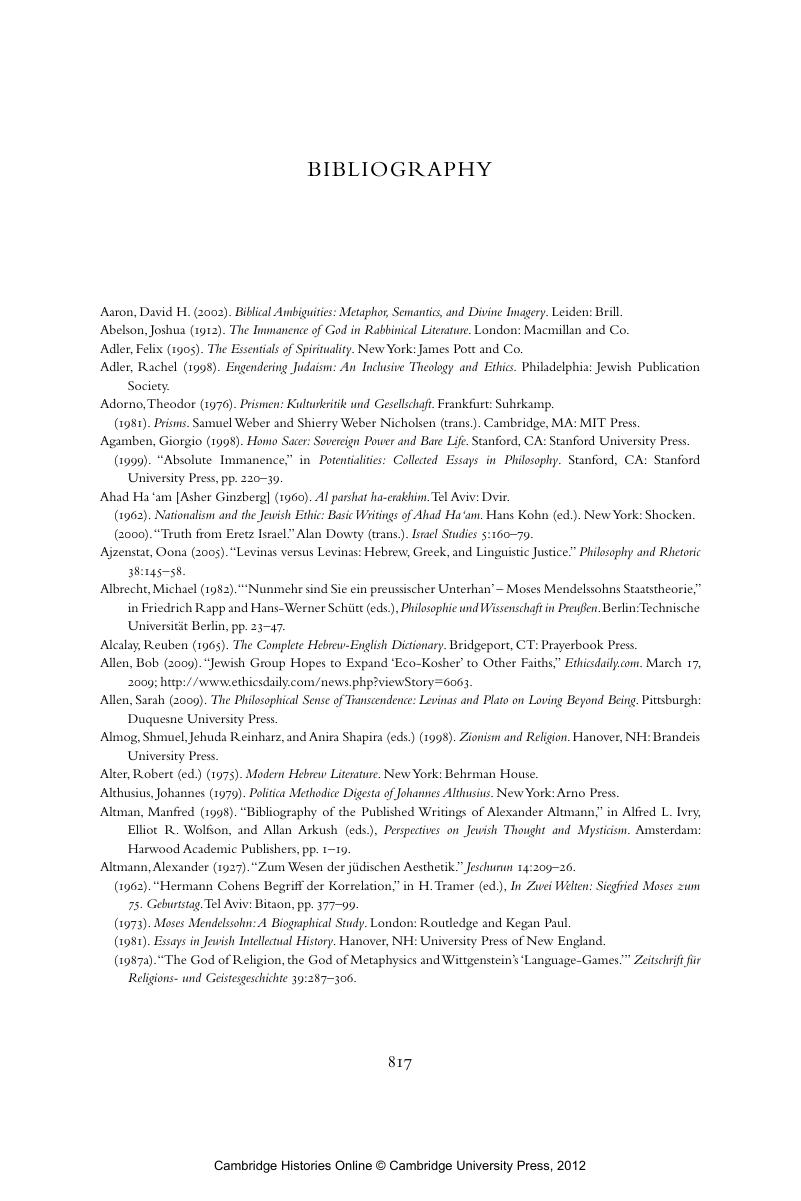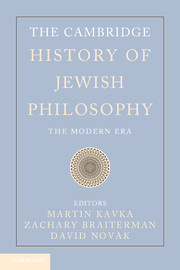Bibliography
Published online by Cambridge University Press: 28 September 2012
Summary

- Type
- Chapter
- Information
- The Cambridge History of Jewish PhilosophyThe Modern Era, pp. 817 - 870Publisher: Cambridge University PressPrint publication year: 2012



